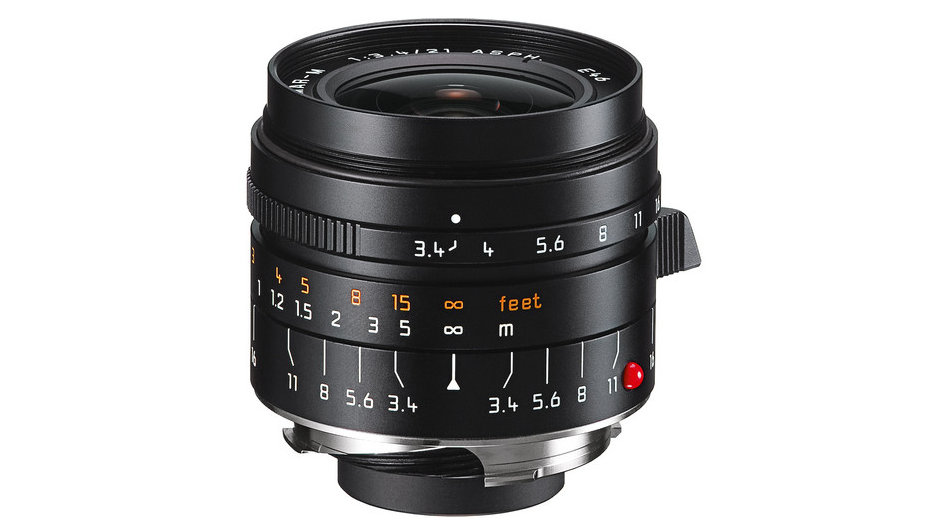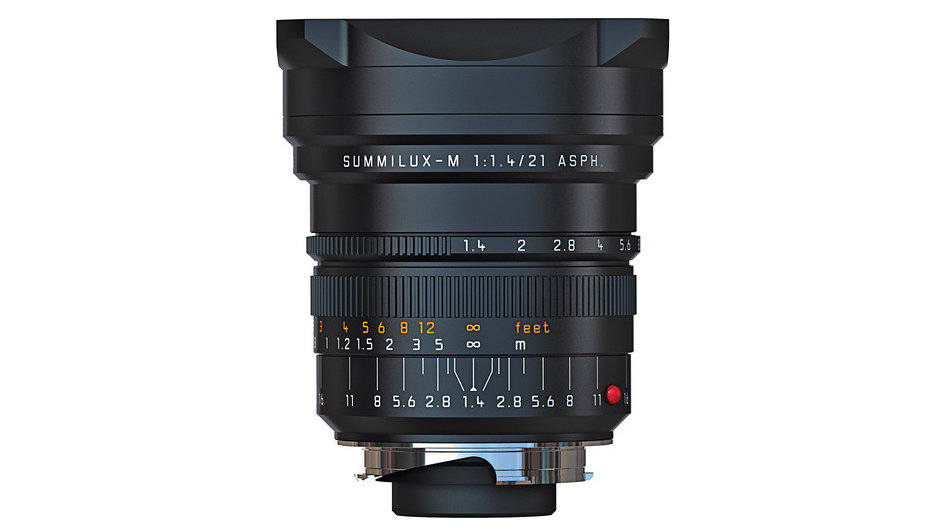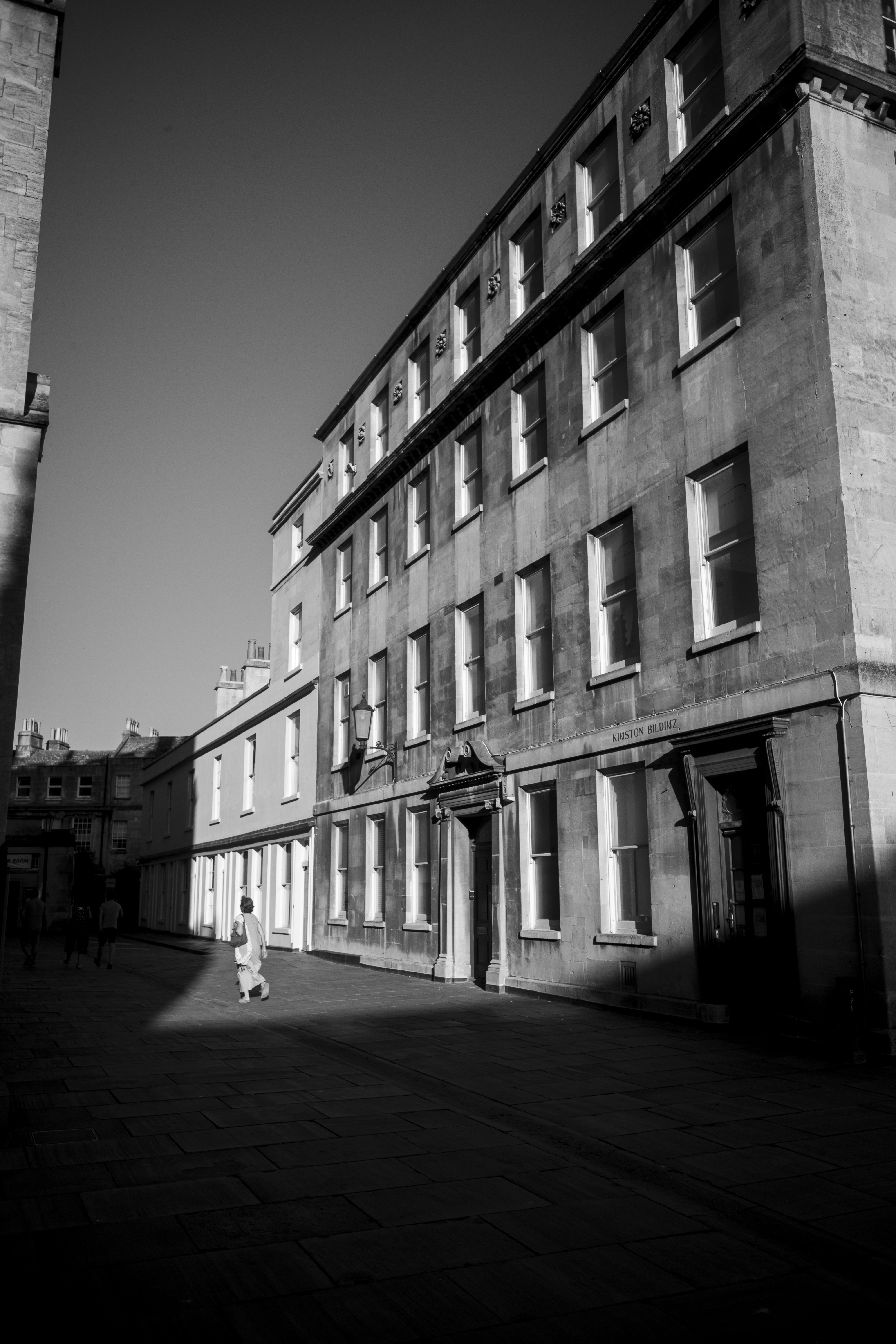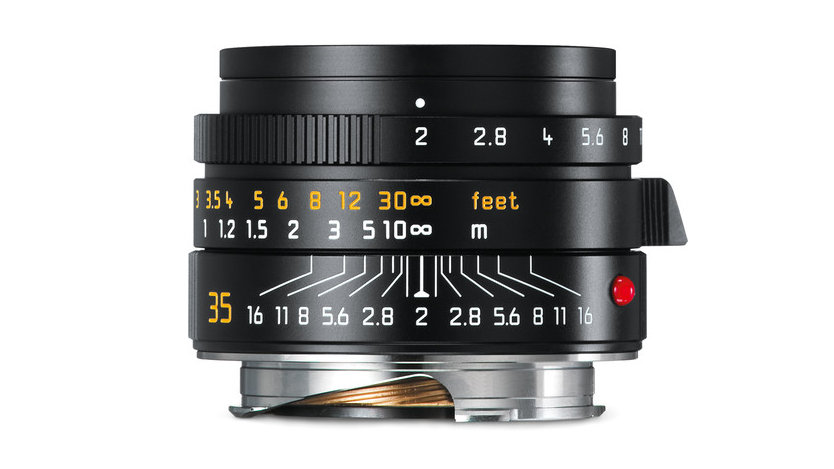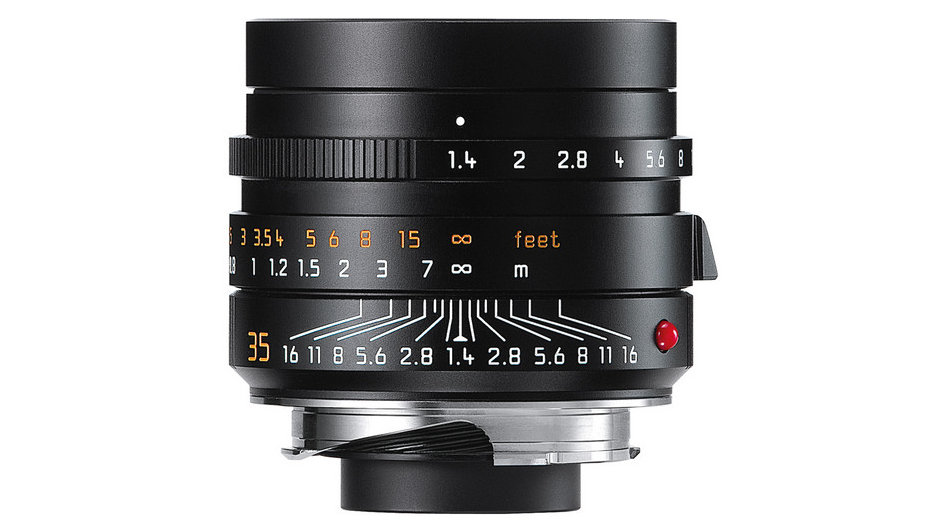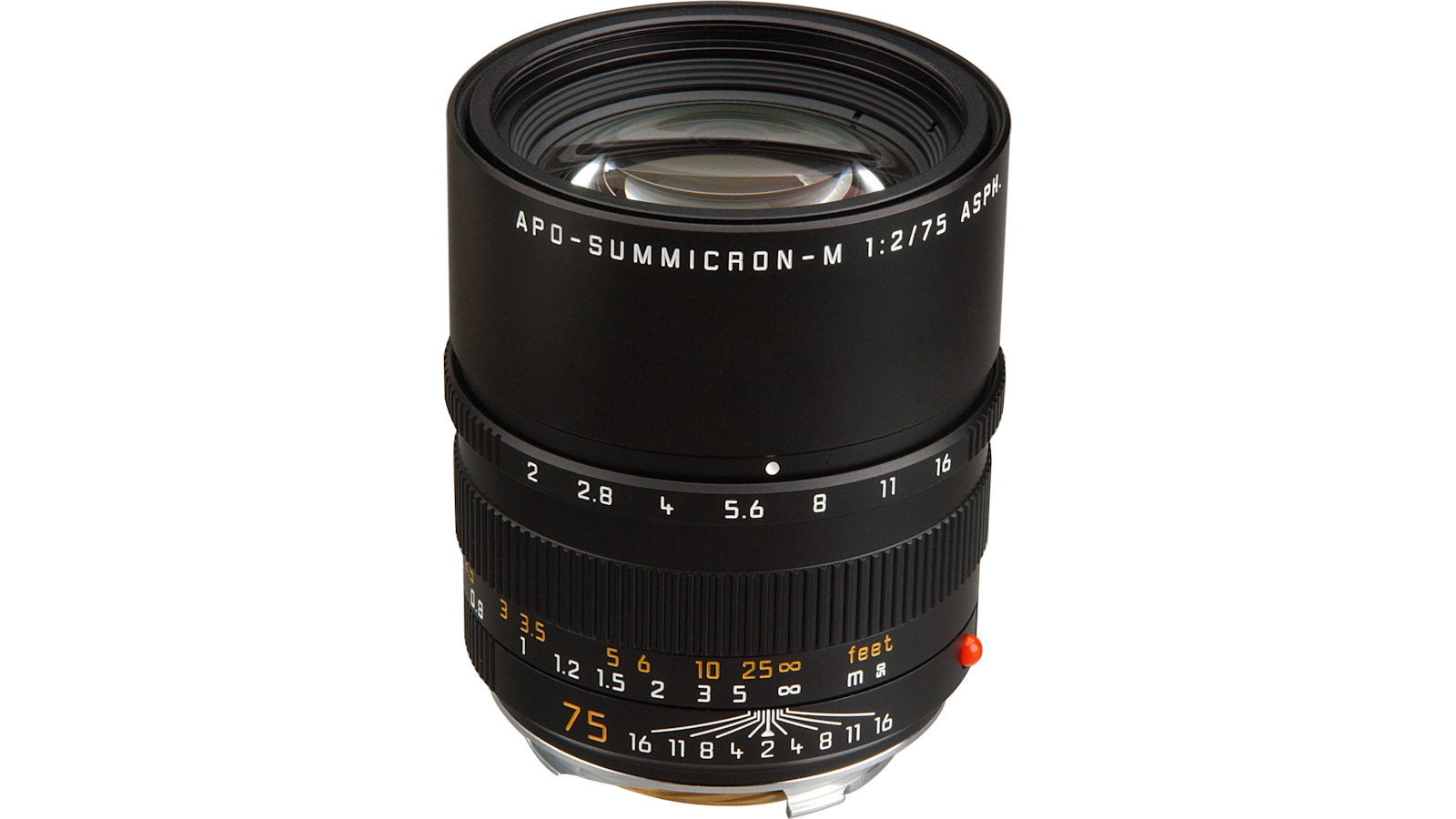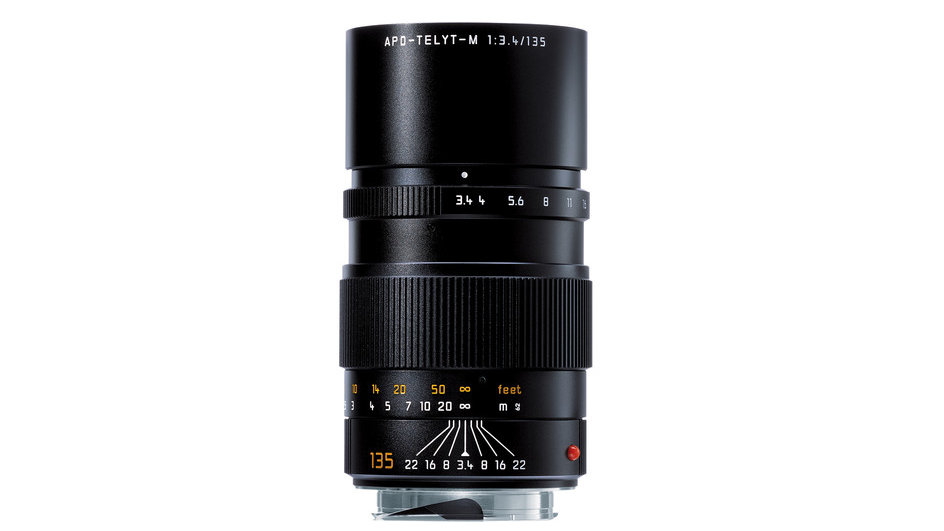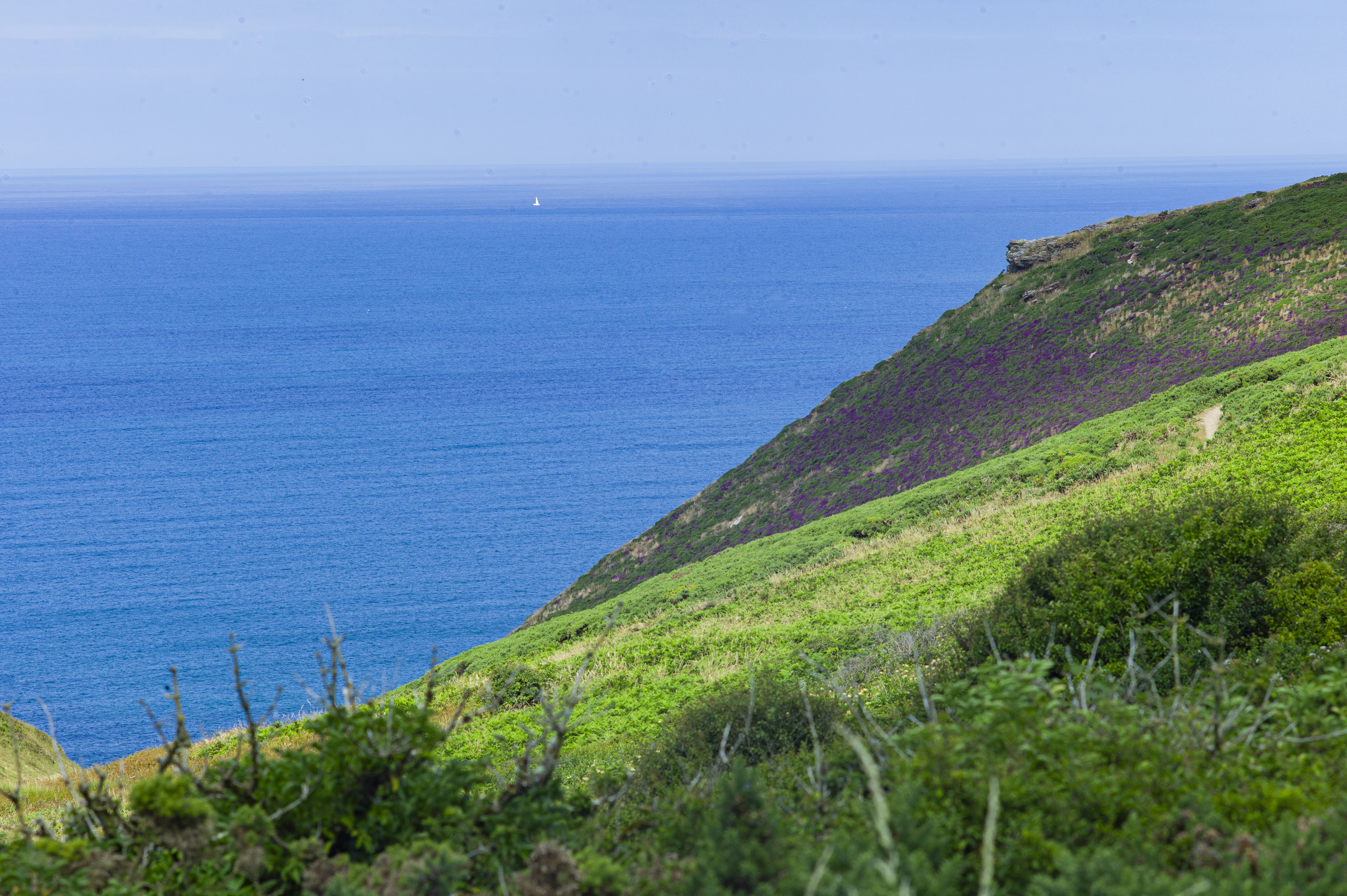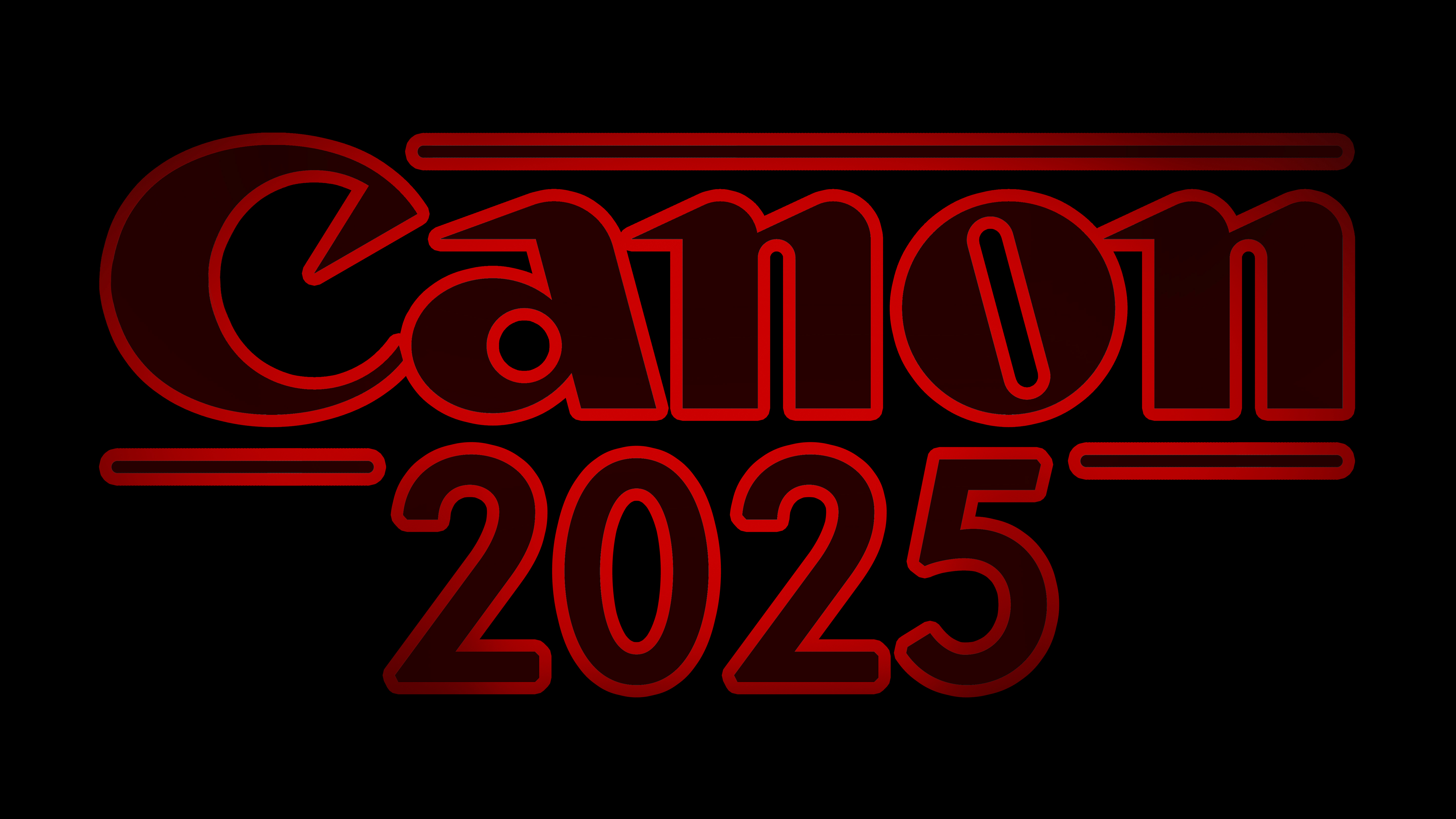Best Leica M lenses in 2025: every current Leica M rangefinder lens
Looking for the best Leica M lens? These are all the Leica-made rangefinder lenses for Leica cameras
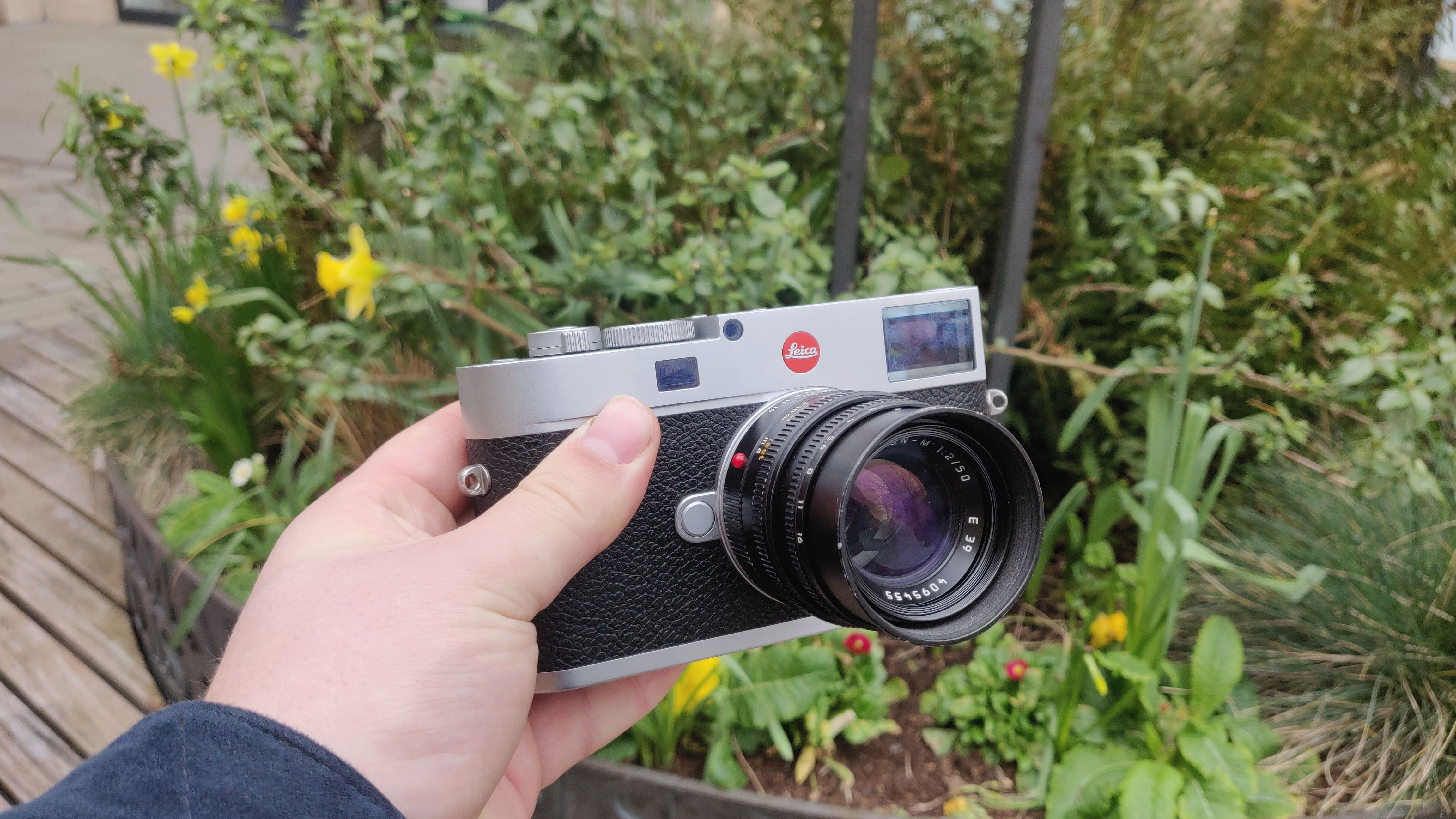
- Best Leica M lenses: our top picks
- Best Zoom for M-mount
- Best budget 21mm
- Best 21mm prime
- Best 24mm
- Best 28mm overall
- Best modern-day classic
- Best compact 35mm
- Best 35mm overall
- Best 50mm for travel
- Best for clarity
- Best 50mm overall
- Best 75mm
- Best 90mm
- Best for reach
- Leica lens names explained
- How we test lenses
When it comes to Leica M lenses, there’s certainly no shortage of choice – and that’s part of their enduring charm. In this guide, I’ll take you through the lineup as I’ve come to know it, highlighting the strengths of each lens and where you can currently find the best deals.
Leica M cameras have always been more than mere tools to me. They’re beautifully engineered, unmistakably characterful, and they encourage a way of shooting that stands apart from today’s autofocus-driven systems. If you’re used to letting the camera take the lead, the shift to manual focus can feel like a learning curve, but once you settle into the rhythm of the rangefinder, it quickly becomes instinctive – a craft Leica shooters have honed for decades.
The latest Leica M11-P, with its 61MP full-frame sensor, shows just how seamlessly tradition and innovation can coexist. It follows the path set by the 40MP M10-R and the M10 Monochrom, yet it maintains the classic combined viewfinder and rangefinder mechanism that has defined the M system for more than 60 years. I use mine for street, portraits, and quiet documentary moments, where the discreet size and whisper-quiet shutter really shine.
That dedication to simplicity carries through to the M-mount lenses. I’ve always loved the fact they’re compact and lightweight, but what truly sets them apart is their optical character - the sharpness, contrast, tonal richness, and colour fidelity that give Leica images their unmistakable presence.
So if you’re thinking about expanding your kit, dive in and explore. These are the lenses I’ve used, admired, and happily recommend – and I hope they help you find your next Leica M companion.

Sebastian has worked as a photographer for nearly two decades, with his images published internationally. Beginning in equestrian sport for clients such as the FEI, The Jockey Club, and Horse & Hound, he has since worked across formats from Phase One and Hasselblad to RED and ARRI. Yet it is Leica that defines his personal work, from black and white street photography on his M-E to film documentary projects with his M2.
Best Leica M lenses: our top picks

Think ultra-wide zooms and you’re probably thinking of big, hefty lenses. Typical of Leica M-mount optics, however, this one is refreshingly small and lightweight.
Read more below

If you’ve been looking for the ultimate 28mm lens to fix onto your Leica for street, reportage, or even landscapes then this Summilux is the one to get, but be prepared to pay handsomely for it.
Read more below
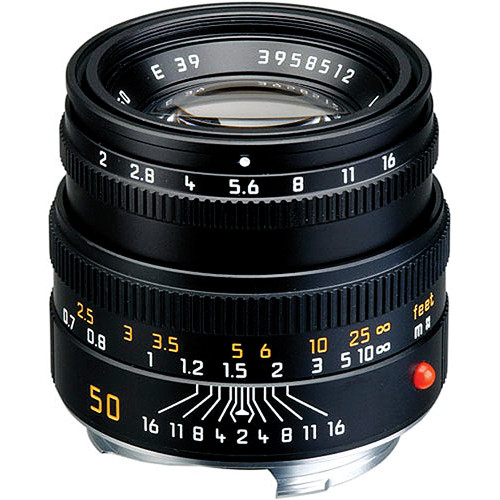
As a Summicron 50mm, this lens has the same f/2 aperture rating as its APO sibling, but in a slightly smaller and lighter build. It’s also much lighter on the wallet, at only about half the cost.
Read more below

If you are looking for a great portrait lens then this 70mm APO Summicron is the perfect choice for quality, contrast, and sharpness
Read more below
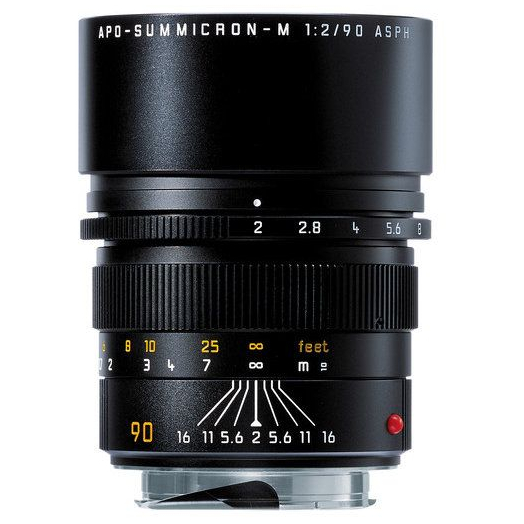
If you want that extra reach over the 75mm the 90mm Summicron is a great choice for those looking to capture all types of action.
Read more below
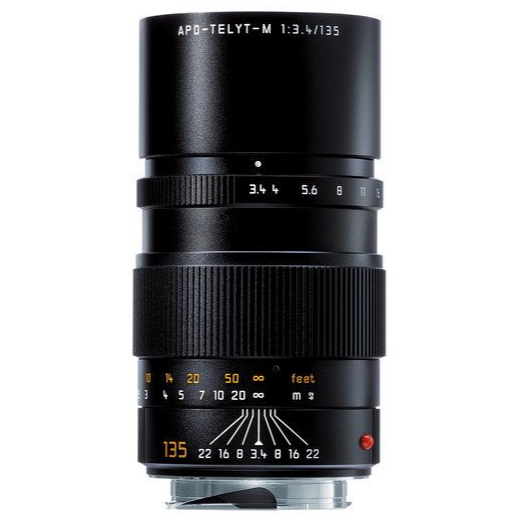
The longest focal length in the Leica lineup this lens is perfect for sports, landscape and everything in-between, and being able to stop down to f/22 makes this a versatile lens.
Read more below
Best Leica M lenses For your Leica M camera
Why you can trust Digital Camera World
Best Zoom for M-mount
1. Leica Tri-Elmar-M 16-18-21mm f/4 ASPH.
Specifications
Reasons to buy
Reasons to avoid
✅ You to carry just one lens: with three focal ranges in one lens this is the perfect wide-angle soon for the Leica system
✅ You shoot with filters: due to its front thread of 67mm (via adaptor) you can shoot landscapes with ND filters to your heart's content
❌ You want a fast aperture: With its fastest aperture being f/4 you are losing up to 2-stops of light when compared to prime alternatives
❌ You want frame lines: Leica's widest framing in all its cameras is 28mm - to see wider you will have to buy an external viewfinder that will cost you a pretty penny!
Think ultra-wide zooms, and you’re probably picturing something big, bulky. and front-heavy—lenses that feel more at home on a DSLR than a compact rangefinder. But, in typical Leica M fashion, the Tri-Elmar-M 16-18-21mm f/4 ASPH. defies that expectation entirely. It’s refreshingly compact and lightweight for an ultra-wide zoom, maintaining the discreet handling and balance that M shooters rely on, even while delivering three distinct focal lengths in a single lens.
Its versatility makes it especially valuable for landscape photographers, where changing lenses mid-hike or mid-scene can be impractical or disruptive. The supplied adapter also doubles as a 67mm filter attachment thread - a rare and extremely useful feature on a lens this wide - allowing you to use essential landscape tools like neutral-density and polarising filters without resorting to awkward, oversized filter systems. The ability to shape the light in front of such wide focal lengths is a major advantage for anyone serious about dramatic skies, long exposures, or precise tonal control.
Optically, the Tri-Elmar-M performs with the kind of discipline you’d expect from Leica. Distortion is kept to a remarkable minimum, and field curvature is impressively well controlled, which makes this lens a superb choice for architectural photography as well. Straight lines stay straight, edges remain clean, and details hold up beautifully across the frame - crucial traits when working with interiors, exteriors or urban geometry.
What truly sets it apart, though, is that it effectively gives you three lenses in one. While it isn’t a zoom in the continuous sense, it is the only Leica Tri-Elmar that allows you to adjust between its 16mm, 18mm, and 21mm settings to fine-tune your composition at the moment of capture. This means you’re less reliant on cropping in post and more empowered to get the perfect framing right in-camera—a philosophy very much in keeping with Leica’s purist approach.
For photographers who love the creative possibilities of ultra-wide perspectives but don’t want to carry multiple primes, the Tri-Elmar-M 16-18-21mm f/4 ASPH. is an elegant, flexible, and highly dependable solution. It’s the kind of lens that expands what an M camera can do, without ever compromising the simplicity and joy of shooting with one.
Final thought
The Leica Tri-Elmar-M 16-18-21mm f/4 ASPH. is a rare gem in the M system—a zoom lens in disguise. Offering three ultra-wide focal lengths in one compact package, it’s ideal for architectural work, tight interiors, or dramatic street scenes. While it’s slower than Leica’s prime lenses and requires an external viewfinder for accurate framing, its optical performance is superb across the board. For those who crave versatility without compromising on image quality, the Tri-Elmar is a unique and highly capable tool that earns its place in any serious M shooter’s kit.
Best budget 21mm
2. Leica SUPER-ELMAR-M 21 f/3.4 ASPH
Specifications
Reasons to buy
Reasons to avoid
✅ You want compact: due to its small aperture Leica has made this the most compact 21mm in its range, great for keeping on your camera all the time
✅ You want a 'cheap' Leica lens: while expensive in terms of Leica quality this is a bargain!
❌You're on a budget: while it's a cheap alternative it's still over 2K - which is a lot!
❌ You have big hands: due to its size it can be rather fiddly to select apertures or adjust focus on-the-fly
Compactness meets relative affordability in this Super-Elmar ultra-wide-angle prime. It’s a wonderfully small, lightweight lens for when you’re trekking across challenging terrain and will reward you with epic landscape images, thanks to its superb sharpness and contrast, along with minimal distortion and vignetting. A metal screw-in hood helps to fend off flare.
Final thoughts
The Leica Super-Elmar-M 21mm f/3.4 ASPH. is a compact, high-performing wide-angle lens that punches well above its weight. Known for its sharpness, minimal distortion, and excellent contrast, it’s a favourite among landscape, architecture, and reportage photographers who value precision and subtlety. While it’s not the fastest 21mm in Leica’s lineup, its small size, superb optics, and reliable performance make it a go-to choice for those who want wide without the weight. Quietly brilliant, it’s a lens that delivers consistently beautiful results without drawing attention to itself.
Best 21mm prime
3. Leica SUMMILUX-M 21 f/1.4 ASPH.
Specifications
Reasons to buy
Reasons to avoid
✅ You want the best: With an aperture of f/1.4 this is the fasted 21mm you can buy from Leica.
✅ You want great optical performance: thanks to its f/1.4 aperture and its solid construction from Leica you will be sure to achieve superb image quality with your images.
❌ You want lightweight: at a hefty 580g this is no lightweight and its size also makes it rather cumbersome
❌ Your saving money: This lens will eat away at any sensible savings you have, costing over 7K
Compactness meets relative affordability in the Super-Elmar-M 21mm f/3.4 ASPH., making it one of the most appealing ultra-wide options in the entire M system. This is a lens designed for photographers who value portability without sacrificing optical integrity. It’s wonderfully small and lightweight - exactly the sort of lens you can slip into a jacket pocket or carry on long treks across uneven ground, mountain paths, or urban environments where travelling light makes all the difference.
Despite its modest size, it’s capable of producing genuinely epic landscape imagery. Sharpness is superb from corner to corner, even at wider apertures, and the contrast is beautifully rendered, giving scenes a crisp, high-definition look without appearing overly clinical. Distortion is extremely well controlled for such a wide field of view, and vignetting is kept to a minimum, allowing for clean, natural-looking horizons and architectural lines that stay true to reality. It’s the kind of lens that rewards careful framing and rewards it generously.
The metal screw-in hood is a subtle but important touch, offering robust protection against stray light and helping to maintain contrast when shooting in harsh or unpredictable lighting conditions. It feels beautifully engineered, as you’d expect from Leica, and adds to the overall sense of durability and dependability. For photographers who love the expansive storytelling potential of a 21mm but don’t want the size, weight, or cost of the faster Summilux variant, the Super-Elmar-M 21mm f/3.4 ASPH. is an absolute standout.
Final thoughts
The Leica Summilux-M 21mm f/1.4 ASPH. is a powerhouse of a wide-angle lens, delivering stunning performance even in the most demanding low-light situations. With its ultra-fast aperture and exceptional sharpness corner to corner, it’s a favourite among photojournalists, street photographers, and those who want to shoot wide and fast without compromise. It’s larger and heavier than other M-mount 21mm options, but the creative flexibility it offers more than makes up for the added bulk. For those who want it all—speed, sharpness, and that signature Leica rendering—this lens doesn’t disappoint.
Best 24mm

Specifications
Reasons to buy
Reasons to avoid
✅ You want fast focus: With a quarter-turn from 0.7 to infinity you can be sure to hit critical focus lightning fast - perfect for street photography
✅ You shoot interiors: 24mm is the perfect range to showoff those fancy interiors to the masses
❌ You're not willing to wait: This 24mm is the best, and because of that it's not in stock at most retailers and now will be a special order at some.
❌ You want a focus tab: Oddly this 24mm Summilux does not have the traditional focus tab, which means its tricky to focus when your used to have one
More than twice the weight and twice the price of the Super-Elmar 21mm f/3.4, the Summilux-M 21mm f/1.4 ASPH. occupies an entirely different league. This is a true statement lens: bold, highly specialized, and built around a super-fast f/1.4 aperture that sets it apart from almost every other ultra-wide option in the M lineup. Its optical construction is significantly more complex too, incorporating multiple aspherical surfaces and high-precision glass elements to keep performance impeccably controlled across such an ambitious design.
What’s remarkable is how well it behaves despite its extreme field of view. Distortion is kept to an absolute minimum, and vignetting is impressively subdued - especially considering the lens’s speed. These traits make it an excellent choice for landscape and architectural photography, where straight lines, clean edges, and faithful perspective are essential. Yet it also shines in low-light environments and environmental portraiture, producing a dramatic shallow-focus rendering that no slower wide-angle can match.
The distinctive rectangular lens hood isn’t just visually striking; it’s genuinely effective. It shields the front element from stray light, helping to maintain contrast, while also accommodating Series VIII filters - something not always possible with ultra-wide, fast-aperture lenses. Altogether, the Summilux-M 21mm f/1.4 ASPH. is a powerhouse: a lens for photographers who want the creative possibilities of a wide angle with the expressive depth and speed normally associated with much longer focal lengths.
Read our full Leica 24mm Summilux-M f/1.4 review for more details

Final thoughts
The Leica Summilux-M 24mm f/1.4 ASPH. is a masterfully engineered wide-angle lens that delivers both speed and subtlety in equal measure. Its fast f/1.4 aperture makes it a natural choice for low-light shooting, while its sharpness, contrast, and beautifully rendered bokeh give images a distinct Leica character. Slightly narrower than a 21mm, it offers a more natural perspective without losing that immersive wide-angle feel. It’s not the smallest lens in the lineup, but for those who want fast glass with impeccable performance, the 24mm Summilux is a standout.
Best 28mm overall
Specifications
Reasons to buy
Reasons to avoid
✅ You want background separation: with outstanding background separation this lens makes your image highlight the subject you are shooting
✅ You shoot street: 28mm is considered the 'gold-standard' wide-angle for street photography and this does not disappoint
❌ You want compact: while it is smaller than most lenses in the Summilux line - this is still rather large to carry every day
❌ You want something cheap: At over 6K this isn't cheap - but it is if you're only shooting this lens for the rest of your life.
If you’ve been looking for the ultimate 28mm lens to fix onto your Leica for street, reportage, or even landscapes then this Summilux is the one to get, but be prepared to pay handsomely for it.
The Leica 28mm Summilux-M f/1.4 ASPH. is built like a tank with only the best materials used, and functions as expected from the renowned German manufacturer. But it will cost you a small fortune to own such a legend of a lens; however, if you’re looking for this to be your one lens to use on every occasion and be strapped to your camera for the end of time, it is a wise investment.
A lens like this carries a lot of prestige with photographers around the world and if they own one they hold on to it, or if they find it, it's never in stock for long, so if you find one in stock then go for it!
Read our full Leica 28mm Summilux f/1.4 ASPH. review for more details

Final thoughts
The Leica 28mm Summilux-M f/1.4 ASPH. is a fast wide-angle lens that strikes a perfect balance between versatility and character. With its bright aperture, it excels in low light and delivers beautifully shallow depth of field when needed—something rare at this focal length. Sharp, contrast-rich, and full of the signature Leica rendering, it’s ideal for reportage, street, and environmental portraiture. While it’s larger than the 28mm Elmarit or Summicron, the Summilux rewards you with flexibility and creative control. For those who favour the 28mm view and demand the best, this lens is a clear choice.
Best modern-day classic
Specifications
Reasons to buy
Reasons to avoid
✅ You want compact: by far the most compact lens Leica makes, this pancake lens is perfectly compact without compromise
✅ You want to 'set it and go': perfect for setting and forgetting this turns your Leica into a fast point-and-shoot
❌ You want a faster lens: at only f/5.6 it means you will need to up your ISO when the sun goes down
❌ You don't want contrast: built to Leica's original lens groups blueprint this lens produces masses of contract, which isn't suited to some.
The Leica 28mm Summaron-M f/5.6 is one of those lenses that you think could be a bit of a gimmick, a recreation of an old lens for the modern day. But that is far from the case, as this is without a shadow of a doubt the most fun lens I have used within the Leica lens lineup.
It produces stunning images filled with the punchy contrast and clarity that make your images stand out from the crowd. It is a tiny marvel of lens engineering and allows for the most compact package that Leica has ever made.
The cost is rather high for a lens with a maximum aperture of f/5.6, but when you look past that and really see how this lens performs in the field, and how it renders images, I think it is worth every penny!
Read our full Leica Summaron-M-M 28mm f/5.6 review for more details
Final thoughts
The Leica Summaron-M 28mm f/5.6 is a lens that leans fully into the charm of minimalism. Compact, lightweight, and beautifully built, it delivers a vintage rendering that harks back to classic reportage photography—crisp, contrasty, and full of character. With its modest aperture, it’s not made for low-light or shallow depth of field, but that’s not the point. This is a lens for quiet, thoughtful shooting—perfect for daylight street photography or travel, where discretion and simplicity matter most. For those who appreciate timeless design and a unique visual signature, the Summaron is a little gem.
Best compact 35mm
7. Leica SUMMICRON-M 35mm f/2 ASPH
Specifications
Reasons to buy
Reasons to avoid
✅ You want compact: weighing in at just 255g this f/2 35mm is wonderfully compact to an everyday carry
✅ You want a classic look: 35mm has been used the many photography greats and gives off a classic look
❌ If you want to use filters: at a weird 39mm you can use filters on this lens but they will cost you more than they should
❌You're scared of getting close: a 35mm comes into its own when you are close to your subject when others might like to remain unseen
Weighing in at just 255g, the Summicron-M 35mm f/2 ASPH. is a perfect example of Leica’s ability to deliver astonishing optical performance from a lens that feels almost featherlight on an M body.
Despite its compact size, it packs in seven precisely arranged optical elements - including a meticulously crafted aspherical element - to ensure top-tier rendering in every shooting scenario. The 35mm focal length has long been considered the gold standard for street photography, and this lens embodies exactly why: it’s discreet, fast to work with, and handles with the kind of mechanical precision that has become synonymous with Leica.
On the performance front, the Summicron 35mm is nothing short of superb. Image quality is razor-sharp from edge to edge, even wide-open at f/2, making it ideal for low-light street work, reportage, or any situation where you want consistent clarity without compromise. Colours are beautifully neutral, micro-contrast is excellent, and the lens retains a very natural rendering that feels true to life.
And then there’s the bokeh: that beautifully smooth, unobtrusive blur that Leica shooters cherish. Thanks to its well-rounded 11-blade diaphragm, out-of-focus areas maintain a pleasing softness not only wide-open but also when stopping down slightly - giving you remarkable control over subject isolation and depth of field. It’s a lens that rewards both spontaneity and precision, making it one of the most dependable and desirable 35mm options in the entire M lineup.
Final thoughts
The Leica Summicron-M 35mm f/2 ASPH. is as close to a do-it-all lens as you’ll find in the M system. Compact, fast, and razor-sharp, it delivers beautifully balanced images with superb contrast, detail, and that classic Leica glow. Whether you’re shooting street, documentary, portraits, or travel, the 35mm focal length offers a natural, storytelling perspective that never feels too wide or too tight. It’s small enough to carry everywhere and performs well in almost any situation. For many, this is the definitive M lens—practical, poetic, and endlessly reliable.
Best 35mm overall
8. Leica SUMMILUX-M 35 f/1.4 ASPH
Specifications
Reasons to buy
Reasons to avoid
✅ You want the best 35mm around: considered the best 35mm in the Leica line-up this lens delivers stunning results
✅ You want low-light performance: with its f/1.4 aperture this lens draws in tons of light
❌ You're on a budget: at over 5K this lens is a heavy investment for most
❌ You want good ergonomics: the lens is rather heavy and bulky which makes it front heavy and substantial to hold
Although it undercuts the Summicron 35mm f/2 in price, the Summilux-M 35mm f/1.4 ASPH. brings something undeniably special to the table. Its faster f/1.4 aperture gives it a clear advantage when shooting in low-light environments, from dimly lit streets to intimate interior scenes, and it offers that beautifully shallow depth of field that so many Leica shooters adore.
If you want a 35mm that can shift seamlessly from documentary work during the day to atmospheric, wide-aperture shooting at night, the Summilux is arguably the more versatile choice.
Its minimum focusing distance isn’t as short as the Summicron’s, which may be a minor limitation for those who like to work extremely close. But Leica has compensated brilliantly with floating elements behind the diaphragm blades - an engineering choice that ensures image quality stays consistently high even as you approach the lens’s closest focusing range. The result is superb sharpness, excellent contrast, and a rendering style that remains rich and three-dimensional regardless of distance.
This combination of speed, character, and optical control is what has made the 35mm Summilux a long-time favourite among M shooters. It’s a lens that can do “perfectly clinical” when required, yet still offers that signature, expressive look when shot wide open. Whether you’re capturing fleeting street moments or crafting more deliberate, artistic frames, it's one of the most compelling 35mm options in the entire Leica ecosystem.
Final thoughts
The Leica Summilux-M 35mm f/1.4 ASPH. is a legendary lens that perfectly blends speed, sharpness, and character. Its fast f/1.4 aperture opens up creative possibilities in low light and delivers a beautifully shallow depth of field, all while maintaining impressive sharpness and contrast across the frame. Compact enough to carry daily yet powerful enough for professional work, it’s a favourite among street and reportage photographers for good reason. With its smooth bokeh and signature Leica rendering, the 35mm Summilux isn’t just a lens—it’s a creative companion that elevates every frame.
Best 50mm for travel
Specifications
Reasons to buy
Reasons to avoid
✅ You're on a budget: at just over 2K this lens offers incredible image quality for the money
✅ You like to travel: with its retractable lens hood and compact stance this lens is great for travel
❌ You want street cred: this is an amazing lens, but it's not the APO which is regarded as incredible
❌ You want f/1.4: at f/2 your not far off, but an f/1.4 will offer better light-gathering when the sun goes down
As a Summicron 50mm, this lens shares the same dependable f/2 aperture as its APO sibling, but packages it in a slightly smaller, lighter, and more classically understated design. It’s a lens that feels quintessentially Leica - compact, beautifully balanced on any M body, and built to disappear into your daily shooting routine. And while it doesn’t carry the APO badge, it does carry a far gentler price tag, coming in at roughly half the cost of the flagship version without feeling like a compromise.
Optically, it’s an absolute gem. Contrast is crisp and confident, colour rendering is beautifully neutral, and the corner-to-corner sharpness is genuinely impressive - even when you shoot it wide-open at f/2. Distortion is so minimal that you’ll only notice it if you go looking for it, and the lens handles high-contrast scenes with remarkable composure. For most photographers, this delivers more than enough performance to last a lifetime.
What makes it so appealing is its balance of size, price, and capability. You get classic Summicron rendering with a modern level of precision, all in a package that’s light enough to carry everywhere and refined enough for any subject, from street to portraiture. It’s arguably the best buy in the entire 50mm line-up, offering that signature Leica look without the financial leap demanded by the APO.
See our full Leica SUMMICRON-M 50 f/2 review.
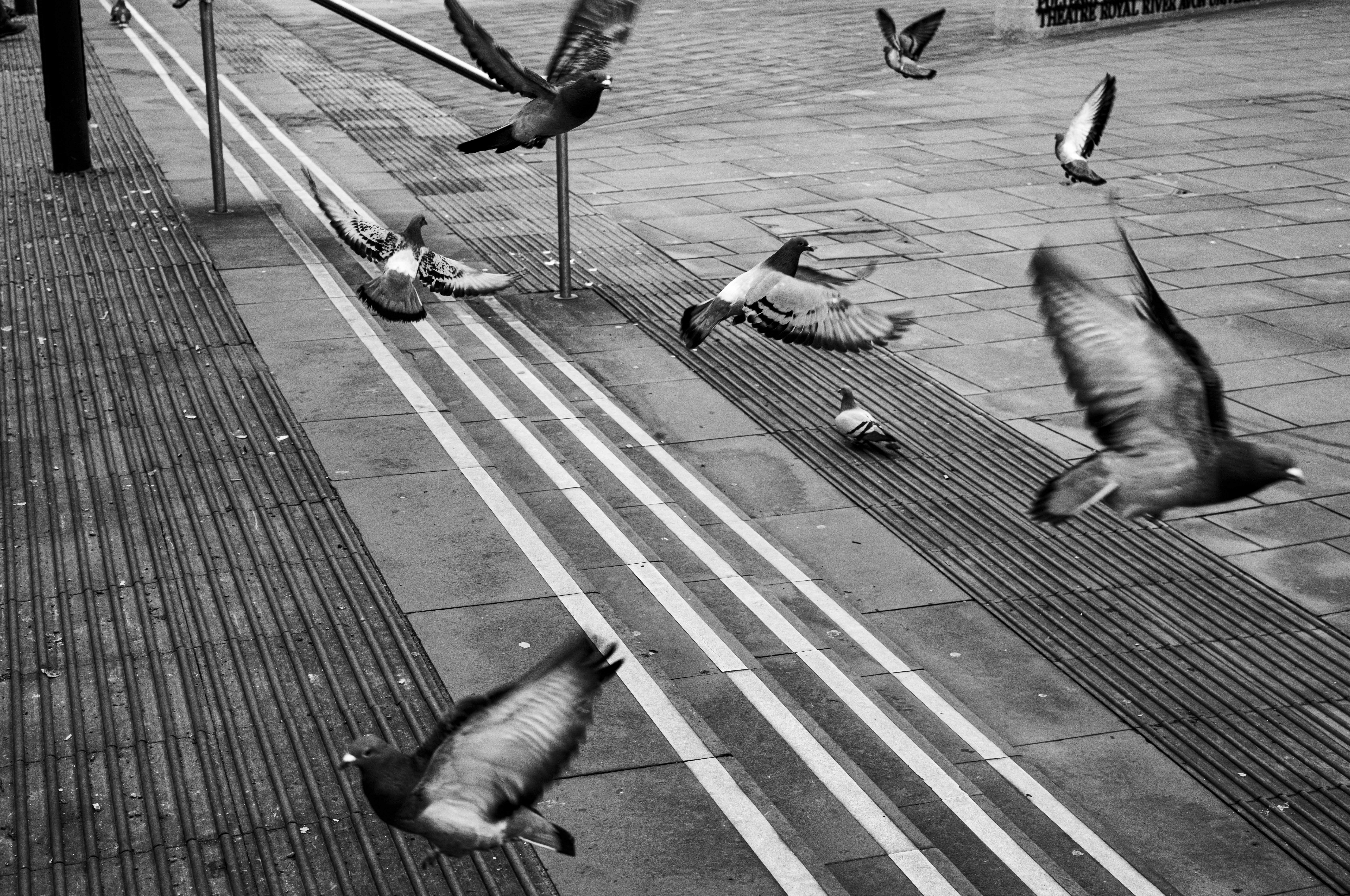
Final thoughts
The Leica Summicron-M 50mm f/2 is a true classic—arguably the most iconic lens in the M system. Known for its perfect balance of size, performance, and character, it delivers exceptional sharpness, rich contrast, and a beautifully natural rendering that suits everything from portraits to street to everyday scenes. Compact and discreet, it’s the kind of lens you can leave on your camera and never feel limited. For many Leica shooters, the 50mm Summicron is the gold standard—a timeless optic that continues to prove that simplicity, when done right, is all you really need.
Best for clarity
Specifications
Reasons to buy
Reasons to avoid
✅ You want the best f/2 around: the APO 50mm f/2 is recorded as the best 50mm out there (some say even better than the Summilux) it surpasses everything in its price range
✅ You want great build quality: Built to the highest standards from the glass to the lens barrel this is pure quality
❌ You want street cred: this is an amazing lens, but it's not the APO which is regarded as incredible
❌ You want f/1.4: at f/2 your not far off, but an f/1.4 will offer better light-gathering when the sun goes down
The Leica 50mm APO-Summicron-M f/2 ASPH is, without exaggeration, one of the crown jewels of Leica’s APO lineup. Its reputation borders on mythical, and for good reason. This is a lens designed with an almost obsessive level of optical perfection, delivering exceptional sharpness even at f/2 and capturing the full nuance of the Red, Green, and Blue wavelengths with astonishing precision. The result is imagery that feels almost sculpted - lifelike, dimensional, and imbued with that unmistakable Leica “pop” that so many other manufacturers attempt to imitate but never quite replicate.
Of course, its price sits in a different orbit from what most people consider “normal” Leica territory - actually, it comfortably doubles it. But lenses like this aren’t bought impulsively; they’re long-term investments. The APO-Summicron-M 50mm is the sort of optic you buy once and then build years, even decades, of photography around. It motivates you to shoot, rewards every ounce of technique, and remains relevant no matter how many camera bodies come and go.
In practical use, the performance borders on flawless. Chromatic aberration is essentially non-existent, even in harsh backlighting or at maximum aperture. The rendering has a 3D quality that gives subjects incredible separation without ever looking artificial or overly processed. And while it’s not a “fast” lens in the traditional sense, its f/2 aperture paired with this level of optical correction produces outstanding low-light results, with clarity and contrast many f/1.4 lenses struggle to match.
Simply put, this is one of the finest 50mm lenses ever made, not just by Leica, but by anyone. It's a masterclass in what modern optical engineering can achieve and a lens capable of serving a photographer faithfully for an entire lifetime.
Read our full Leica 50mm APO Summicron-M f/2 ASPH review for more details

Final thoughts
The Leica APO-Summicron-M 50mm f/2 ASPH. is a technical masterpiece—one of the sharpest and most optically refined lenses Leica has ever produced. Designed to deliver near-perfect performance even wide open, it offers astonishing resolution, minimal aberrations, and a clinical level of precision, all while maintaining a subtle, elegant rendering. It’s compact, discreet, and built with absolute attention to detail. While it comes at a premium, the APO-Summicron isn’t just a 50mm—it’s the benchmark. For those who demand the very best from their glass, this lens sets the standard.
Best 50mm overall
12. Leica SUMMILUX-M 50 f/1.4 ASPH.
Specifications
Reasons to buy
Reasons to avoid
✅ You want the best: While the APO is recorded as the best, the Summilux is regarded as the one to have!
✅ You want street cred: Summilux is renowned all over as the best lens and other photographers admire your lens from afar
❌ You want lightweight: It is hefty, but compact which makes it a bearable weight to carry for its amazing images
With its faster f/1.4 aperture, it’s the more natural choice for low-light shooting, late-evening street work, and any situation where you want to draw the viewer’s eye straight to your subject through tighter depth-of-field control. It’s a classic Leica look - romantic, intimate, and full of character - without ever veering into softness or compromise.
At the same time, the 50mm focal length remains the most natural viewing perspective for many photographers, making this Summilux feel instantly familiar and intuitive. It’s the kind of lens you can leave on your camera all day, knowing it will handle anything from portraits to documentary shooting with quiet confidence. Even wide open, it delivers sharp, high-contrast images with that signature Summilux glow - a gentle lift in the highlights and a smooth, beautifully controlled fall-off that flatters every subject.
This combination of speed, character, and precision is what’s made the Summilux 50mm a favourite for decades. Whether you're working in near darkness or crafting shallow-focus images with a cinematic feel, it remains one of the most expressive and versatile lenses in the entire M system.
Final thoughts
The Leica Summilux-M 50mm f/1.4 ASPH. is the quintessential fast fifty—offering a perfect blend of speed, character, and technical excellence. Wide open, it produces beautifully smooth bokeh with that signature Leica glow, while still delivering crisp detail where it counts. As you stop down, the lens sharpens to a fine edge, making it incredibly versatile for everything from portraits to low-light street work. Compact and impeccably built, it’s a lens that feels just right on any M body. For many photographers, this is the dream 50mm—fast, expressive, and endlessly inspiring.
Best 75mm
13. Leica APO-SUMMICRON-M 75 f/2 ASPH.
Specifications
Reasons to buy
Reasons to avoid
✅ You shoot portraits: the best prime for portraits in the Leica lineup
✅ You're on a budget: Really 'affordable' for Leica
❌ You want compactness: it is rather larger for 75mm, and makes it unbalanced in the hand
A highly versatile short telephoto lens, the APO-Summicron-M 75mm f/2 ASPH. is one of those quietly brilliant optics that slots into almost any photographer’s workflow. Sitting neatly between the classic 50mm and 90mm focal lengths, it’s a lens that feels equally at home in nature and landscape work as it does in portraiture, offering a slightly tighter perspective without losing that natural, documentarian feel that M shooters love.
The fast f/2 aperture gives you plenty of control over depth of field, allowing for beautifully isolated subjects and a gentle fall-off into blur. While it naturally can’t compete with the theatrical separation of the 75mm Noctilux, it’s not trying to. Instead, it delivers a more balanced rendering - crisp, structured and elegant - without the weight, size or financial commitment that comes with its nocturnal sibling.
And that’s really the appeal here: image quality is fabulous in all respects, from biting central sharpness to the rich micro-contrast and faithful colour reproduction you expect from an APO-design.
Yet the lens weighs less than half of the Noctilux and comes in at roughly a third of the price, making it a far more practical everyday option. Whether you’re travelling light, shooting intimate portraits, or capturing those in-between moments that define Leica photography, the 75mm Summicron is a wonderfully flexible and rewarding companion.
Final thoughts
The Leica APO-Summicron-M 75mm f/2 ASPH. is a short telephoto lens that blends reach, precision, and compactness in a way few others can. Designed with apochromatic correction, it delivers exceptional sharpness, rich microcontrast, and true-to-life colour with virtually no aberration—ideal for portraits, detail work, or tighter compositions. Despite its optical sophistication, it remains relatively small and balances beautifully on any M body. For those who want a bit more intimacy in their framing without sacrificing image quality, the 75mm APO-Summicron is a quietly brilliant choice.
Best 90mm
14. Leica APO-SUMMICRON-M 90 f/2 ASPH.
Specifications
Reasons to buy
Reasons to avoid
✅ You want extra reach: 90mm is perfect for when our out and about.
✅ You want low-light performance: with an aperture of f/2 this is a great lens to shoot when you have less available light
❌ You're on a budget: It's a rather expensive lens for the reach when you compare with other brands
❌ You plan to carry it all day: with its large f/2 aperture and being a 90mm it's a rather large and heavy lens to carry all day long
Arguably the best compromise between optical quality and purchase price among Leica’s M-mount 90mm primes, the APO-Summicron-M 90mm f/2 ASPH. is one of those lenses that quietly asserts its brilliance the moment you start shooting with it. It brings together full APO correction, an aspherical element and that reassuringly fast f/2 aperture, giving you a combination of precision, speed and refinement that feels unmistakably Leica.
Its versatility is what makes it such a favourite. This is a lens that moves effortlessly between photojournalism, theatre work, environmental portraits, and classic headshots, offering enough reach to keep you discreet while still maintaining an intimate connection with your subject. Wide-open, it delivers exceptional sharpness and contrast right across the frame, with a tight depth of field that makes isolating a subject feel completely effortless.
And then there’s the bokeh: smooth, creamy and beautifully controlled, without the distractions or colour fringing that often plague fast telephoto primes. Whether you’re working in dim backstage conditions or out on the street chasing fleeting moments, the 90mm f/2 ASPH. consistently produces images with a clarity and subtlety that lift it above most other lenses in its class.
Final thoughts
The Leica APO-Summicron-M 90mm f/2 ASPH. is a stunning example of optical precision in a classic portrait length. With apochromatic correction and aspherical design, it delivers breathtaking sharpness, lifelike colour, and virtually no distortion or fringing—even at f/2. Despite being a 90mm, it handles beautifully and remains compact enough for handheld shooting. Its shallow depth of field and creamy bokeh make it a favourite for portraiture, while its clarity and compression suit everything from travel to fine art. If you’re after reach without compromise, the 90mm APO-Summicron is as good as it gets.
Best for reach
15. Leica APO-TELYT-M 135mm f/3.4
Specifications
Reasons to buy
Reasons to avoid
✅ You want extra reach: this 135mm is the longest focal length you can buy an help want you want to get closer to the action
✅ You want to stop down: with its highest aperture being f/22 you can really get every single detail in focus
❌ You want less bulk: this is a rather long lens and can be cumbersome to travel with it not using it all the time
❌ You want something cheap: this will set you back over 3K, but the older (and bigger) 135mm f/2.8 can be had for under $300/£300 secondhand
Topping the M-mount range in terms of telephoto reach, the Leica APO-Telyt-M 135mm f/3.4 really does cover the distance. This is the lens you reach for when you need to compress perspective, isolate a subject, or bridge that frustrating gap when you simply can’t get as physically close as you’d like. It brings far-off scenes into a tighter, more intimate frame without sacrificing the elegance and precision that define the M system.
Despite its reach, it handles beautifully on an M body – balanced, slim, and surprisingly unobtrusive for a 135mm. It also comes into its own for tight head-and-shoulders portraits, letting you work from a comfortable distance while still achieving that flattering, gently compressed look. Subjects remain relaxed, you stay out of their personal space, and the resulting images feel natural rather than forced.
And, as you’d expect from anything wearing the APO badge, image quality is exemplary across the board. Sharpness is exceptional, colour rendition remains wonderfully neutral, and longitudinal chromatic aberration is virtually non-existent. Whether you’re picking out details across the street or photographing people who need a little breathing room, this is one of the finest long lenses ever made for the M system.
Final thoughts
The Leica APO-Telyt-M 135mm f/3.4 is a specialised telephoto lens that rewards patience and precision. Offering remarkable sharpness, minimal chromatic aberration, and excellent compression, it’s ideal for tight portraits, distant subjects, and detail-rich compositions. Its slower aperture and narrow depth of field demand careful focusing—often best done with a magnifier or EVF adapter—but the results speak for themselves. Compact for its focal length and built to Leica’s exacting standards, the APO-Telyt-M 135mm isn’t for casual shooting, but in the right hands, it’s a powerful and rewarding tool.
Leica lens names explained
Leica lenses go by a variety of names. It can be confusing for the uninitiated, but the underlying simplicity is that the names refer to aperture ratings. In ascending order of speed, the Summaron has an aperture of f/5.6, whereas it’s f/4 for the Elmar, around f/3.4 to f/3.8 for the Super-Elmar, and f/2.8 for the Elmarit.
Ramping things up into super-fast territory, there’s the f/2 Summicron, f/1.4 Summilux, and ultra-fast f/0.95 to f/1.25 Noctilux range.
As a photographic brand, Leica is somewhat legendary for the exacting standards of its German high-tech design and precision engineering. That’s still generally the case but, to get around import tariffs in the USA, be aware that some M-mount lenses are now also made in Portugal and are available at reduced prices in the States. Let’s take a look at all of the lenses in the current M-mount line-up.
How we test lenses
We test lenses using both real world sample images and lab tests. Our lab tests are carried out using the Imatest testing suite, which consists of custom charts and analysis software that measures resolution in line widths / picture height – a measurement widely used in lens and camera testing.
1. Sharpness (Imatest): Here we measure sharpness at different apertures from the centre to the outer edge. We shoot the chart pictured and Imatest outputs a figure based on line width divided by picture height – high numbers are better.
2. Distortion (Imatest): This test measures the distortion caused by the lens. We shoot the simple, lined chart pictured above and then output an accuracy percentage in Imatest. The most accurate result (ie, the best) would be 0%.
3. Fringing (Imatest): This test measures the occurrence of chromatic aberration. We shoot the chart pictured above, then analyze the photos using Imatest. The results are expressed in pixels, with lower numbers being better.
You might also be interested in
Best Leica cameras
Leica M11-p review
This is why Leica cameras are so expensive
Leica M-A review
Leica M11 Monochrom review
Leica Q3 43 Review
The best camera deals, reviews, product advice, and unmissable photography news, direct to your inbox!

For nearly two decades Sebastian's work has been published internationally. Originally specializing in Equestrianism, his visuals have been used by the leading names in the equestrian industry such as The Fédération Equestre Internationale (FEI), The Jockey Club, Horse & Hound, and many more for various advertising campaigns, books, and pre/post-event highlights.
He is a Fellow of the Royal Society of Arts, holds a Foundation Degree in Equitation Science, and holds a Master of Arts in Publishing. He is a member of Nikon NPS and has been a Nikon user since his film days using a Nikon F5. He saw the digital transition with Nikon's D series cameras and is still, to this day, the youngest member to be elected into BEWA, the British Equestrian Writers' Association.
He is familiar with and shows great interest in 35mm, medium, and large-format photography, using products by Leica, Phase One, Hasselblad, Alpa, and Sinar. Sebastian has also used many cinema cameras from Sony, RED, ARRI, and everything in between. He now spends his spare time using his trusted Leica M-E or Leica M2, shooting Street/Documentary photography as he sees it, usually in Black and White.

